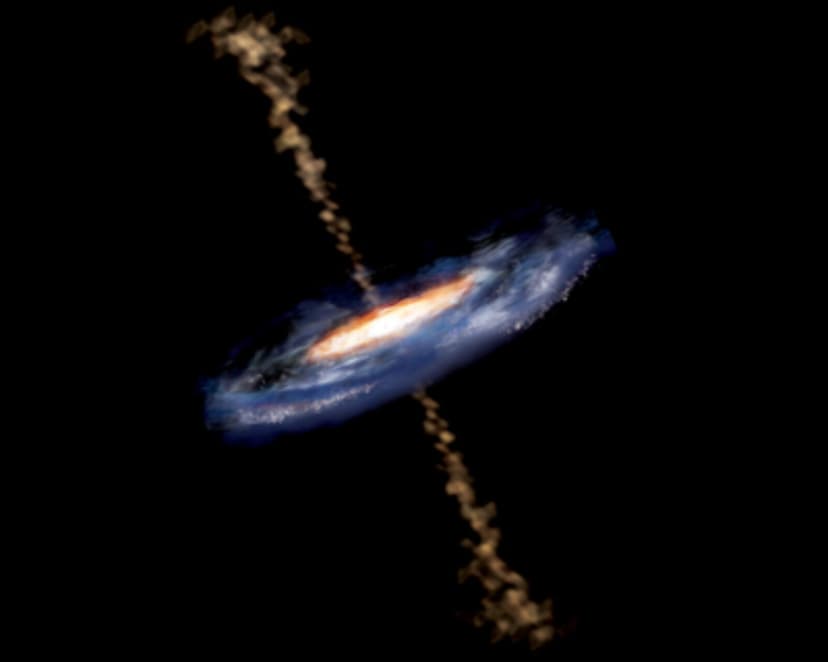Quasars Have Turned Down the Radio, and the Lights

(Originally published by Stanford University)
July 25, 2012
In the hearts of many distant galaxies, monsters lurk, in the form of supermassive black holes with a billion times the mass of the Sun. The enormous gravity pulls in an accretion disk of matter, and the interaction of the matter and the black hole sends out giant twin opposing jets of super-accelerated particles. In a supersized take on particle accelerators as we know them on Earth, the jets can be more than ten times the diameter of a typical galaxy, and they can shine in light across the electromagnetic spectrum. We typically see these objects as quasars, distant sources of bright optical, radio, and X-ray light.
In the decades since quasars were first identified, with first hundreds, then thousands, and now tens of thousands known, astronomers have sought to determine the population characteristics of quasars, such as how common bright ones are relative to dim ones, how their emission has changed over time, and what is the relation between the different kinds of light they emit. But these celestial censuses have always been limited by a fundamental aspect of extragalactic astronomy, that one sees any objects if they are close enough but only the brightest objects if they are far away. In the case of quasars, the farthest ones are thousands of times as far away as the nearest ones, and as with any cosmic source, we see the farther ones as they were farther back in time. So how to determine the characteristics of a population when you can only see a small, biased sample of the members?
One powerful technique for doing so was developed over a decade ago by KIPAC professor Vahe Petrosian and Stanford statistics professor Bradley Efron. They developed an algorithm to derive the parameters of a population that could appropriately take into account the limitations and biases for observations in one band, such as in optical light. For quasars, many have been identified in optical and radio surveys, but since confirmation as a quasar requires an optical spectrum, any determination of the radio emission properties of quasar populations must take into account the observational biases in both bands and the correlations among the radio and optical light simultaneously.
Recently, Petrosian, along with KIPAC postdoctoral scientist Jack Singal, former KIPAC postdoc Lukasz Stawarz, now with the Japanese Space Agency, and frequent KIAPC visitor Andy Lawrence of the University of Edinburgh, have extended the technique to deal with all of these limitations and determine the characteristics of quasars as a population in both radio and optical light from survey data. They applied their analysis methods in a previous paper with a limited sample of quasars, and have now turned to the largest sample of quasars yet available, the recently released Sloan Digital Sky Survey (SDSS) Data Release 7 catalog, which has optical light measurements for over 100,000 quasars. They combine the SDSS data with that from the FIRST radio survey, which has over 400,000 celestial radio sources, to achieve a huge combined radio and optical quasar sample for analysis.
In agreement with their previous results, the team finds that over the history of the Universe, from the distant past to the present, quasars have, on average, steadily become much dimmer in both radio and optical light. However, quasars have not dimmed the same in both bands, rather they have typically dimmed significantly more dramatically in radio than in optical. Also, the analysis has shed new light on a contentious question, whether there are really two types of quasars, with one typically more radio emission dominated than the other, or whether there is just one type with a wide range of emission characteristics. The KIPAC team's latest results unambiguously favor the one population model. While these results are sure to spark controversy, they represent the most rigorous analysis yet of the evolution of quasars in both radio and optical emission.
